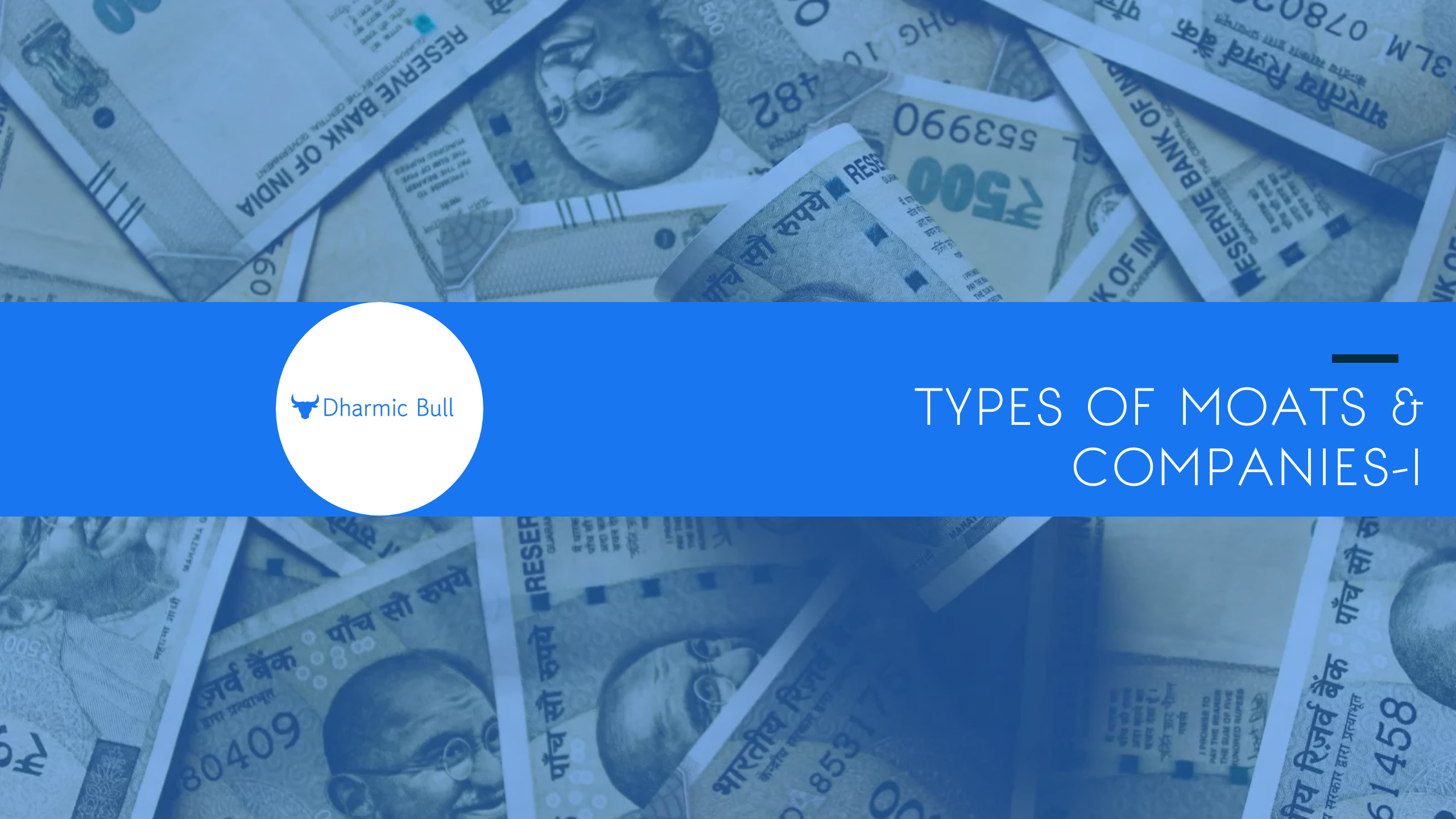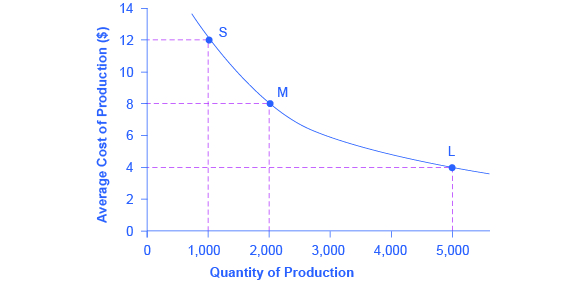
Moats are competitive advantages which allow companies to gain market share, make significant profits, and rule over competitors. The word was popularized by Warren Buffet. It refers to the deep, wide ditch surrounding a fort or a castle which is typically filled with water and used as a defense against the enemy’s attacks. Our goal should be to invest in companies with strong moats who will survive both good and bad times.

To assess the strength, we must first understand it’s characteristics and know the different types:
Economies of Scale
This refers to building large production capacities which enable minimization of marginal cost of production. With increased volumes, the average cost per unit falls and the company can become the lowest cost producer in the industry. Scale leads to operational and cost efficiencies which in turn leads to huge advantages over smaller competitors with limited funds. This phenomenon is generally observed in commoditized industries where the right to win lies with the producer who can offer the lowest price (which is only possible on a sustainable basis with the lowest production cost). Economies of scale also lead to consolidation of profit pools as more and more small competitors realize that at a low price point, operations are not financially viable.
Network Effects – Marketplace, Pipeline, Networks
This is the most interesting and powerful moat for a company to have. When a company builds a platform whose value increases with the number of buyers and sellers transacting on the platform, it is said to have established a positive flywheel. The value of the network keeps on increasing which makes it extremely difficult for upstarts to enter the industry or fight against the company. There are different types of networks: Marketplace, pipelines and social networks. Marketplaces connect buyers and sellers which makes them invaluable for both. Pipelines have vast distribution reach and control over supply. The more people using the pipeline, the more power the pipeline gets over its suppliers, which increases the value of the pipeline itself. Social Networks are the ultimate networks because user activity is more frequent and voluminous than the other 2 mentioned. In terms of growth potential, social network > marketplace > Pipelines. One should also be mindful of negative networking effects which can rapidly diminish the value and establish a negative flywheel.
Brand

Brands command customer loyalty and signify differentiation. Branding is dynamic and companies need to constantly invest in maintaining their image. This investment if successful brings huge benefits in terms of increased customer preference, purchase, retention, repeat buying, vocal ambassador. It can also lead to crowding out of competitors from the customer’s minds. If a brand hires a celebrity to promote its products and spends heavily on advertising it, then it can capture a large % of customers mindshare who now will associate that product category with the brand itself and won’t go to competitors unless compelled to do so.
Pricing Power

While brands have pricing power, a lot of B2B companies also have this by virtue of producing specialty high value complex products or being quasi monopolies in niche industries or having very high market share. Pricing power reduces the customer’s bargaining power, and the company becomes a price maker and not a taker. It can set the industry price and others must follow suit because of its leadership position and hold over customers. The conventional thinking goes that a high profit margin serves as proxy for pricing power which is true. However, companies with high market share and low profit margin also have some pricing power because they can prevent entry of other competitors by working on razor thin margins making new setups often unviable.
Intangible Assets
Intangible assets can be patents or exclusive license/franchise or non-patented production techniques which allows the manufacturer to achieve efficient scale. R&D can also be a huge advantage of companies in their quest to make high value difficult to produce products. The most competitive countries and companies in the world invest a lot of money in R&D because while the near-term impact may be negligible, a breakout for the long term can bring outsized returns.
Government Regulation
Government regulations can shield an industry from both fair and unfair competition. While it can be argued that it is detrimental to the consumer’s interest, but this also allows fledgling industries to become strong enough to survive battles against MNCs when the rules are relaxed eventually. Governments also offer subsidies and other forms of incentives to encourage growth of nascent industries due to commercial and/or strategic reasons.
Think of anti-dumping duties imposed on China for different solar components, PLI schemes given to incentivize semiconductor manufacturing, the complete ban on import of drones.
Switching Costs
Customers avoid switching suppliers if the component produced is very critical to their operations. Here quality matters far more than cost which could be miniscule. Inertia sets in and it can take years of effort for any new supplier to be even considered, let alone approved as an alternative. A great example is the auto-ancillary industry where customers take years to test and approve a new supplier’s products.
Scale economy shared & Bargaining power over suppliers
This is one of the rare types of moats which one doesn’t come across too often and is in essence a combination of economies of scale and network effects. The best way to understand this is to visualize Amazon & Cost Co. Scale increases their bargaining power over suppliers, which helps them reduce costs. This is passed down to customers in the form of reduced prices. Competition can never match their prices and thus continue to lose market share to them. The more customers transact, lesser will be the prices served. So the company is basically sharing the benefits of efficient scale with its customers thereby cementing its advantage for the long term.
A lot of companies have a combination of the above moats, and this only increases their overall strength. Unfortunately, most companies whose moats have been discovered command sky high valuations as the market takes their growth for granted. As smart investors, we need to find companies with emerging moats which are not fully established or proven, or companies with established moats which the market has not fully priced in.


Leave a Reply